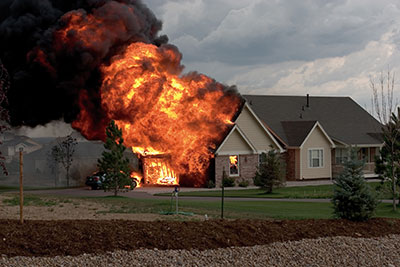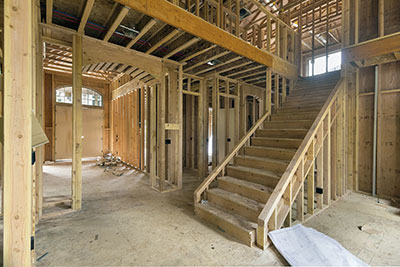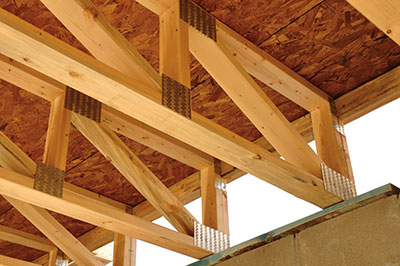
Features
Structural
Training
Fire behaviour
Fire is predictable, contrary to what some in the fire service believe.
September 27, 2013
By Ian Bolton
Fire is predictable, contrary to what some in the fire service believe.
 |
|
| Void spaces, such as an attic, provide increased air supply and a high surface-to-mass ratio of fuels. The result is often a massive heat release rate.
|
When some of the more influential variables of fire development are known, such as fuel-load characteristics, structure and compartment geometry, and the ventilation profile, reasonably accurate predictions of fire progress can be made.
Predicting fire behaviour, however, is a challenge for fire crews arriving on the scene of a working fire; at this point an incident commander must make decisions based on limited information in a stressful and time-sensitive situation. Predicting fire progress is an exercise of information gathering, coupled with using existing in-depth knowledge of fundamental fire dynamics and fire-behaviour concepts.
Modern home geometry
The fire service has been talking for a long time about the impact of modern building practices and materials on the structural integrity of buildings under fire conditions. However, the impact of these changes on fire behaviour and fire development is not often considered.
Since the 1950s, homes have increased in size, particularly in suburban areas. As homes became larger, further changes were introduced through the use of lightweight engineered lumber, which allows for more design options. An advantage of engineered lumber, from an architectural and design position, is that it allows for bigger spaces with fewer load-bearing walls. As a result, today’s homes are much less compartmentalized than older homes.
When a fire develops in a compartmentalized building in which the interior structure separates the rooms, it is more difficult for the fire to grow and spread to uninvolved areas; the separating walls inhibit the air needed for a developing fire and reduce the ease of energy transfer and fire gas migration. In homes with open floor plans, great rooms and vaulted ceilings, fires grow faster because air is
readily available and the energy transfer
is efficient.
Additionally, as land values increase, these larger homes are often built on smaller lots. Homes of this size and design built closely together in new suburban neighbourhoods result in greater exposure concerns for fire crews.
Effects of building materials
Building materials contribute to how a fire develops in a structure. Compartment boundaries constructed of concrete, brick or masonry products, for example, can absorb a considerable amount of the fire’s energy during the growth stage. A fire developing in this type of environment can, therefore, initially be slowed to some degree. However, once a compartment of this nature has reached its full potential of energy absorption, it may be more difficult to cool the fire gases and knock down the fire.
 |
|
| Popular design options, such as an open floor plan and high vaulted ceilings, affect fire behaviour. The availability of air in these spaces feeds fire growth.
|
Conversely, newer structures built with energy efficiency in mind will not be able to absorb as much of the fire’s energy. The energy released by the fire will then reradiate from the compartment lining back toward the interior. For this reason, fires often develop more quickly in these types of structures.
With engineered lumber and lightweight truss design in modern homes, there are significantly more void spaces. Floor-assembly design alone can dramatically affect fire spread; heavy timber joists, which are often omitted from modern structures, slowed fire progress by confining it to individual spans between joists. With newer, more open, joists and trusses, fires now efficiently spread through entire floor systems. Further, the abundance of available air in these spaces and the increased surface-to-mass ratio of the engineered products contribute to faster fire spread.
Research by Underwriter Laboratories (UL) has demonstrated that failure times of windows have also changed. Modern double- or triple-glazed vinyl windows have been shown to fail more quickly than traditional single-pane, wood- or metal-frame windows. This result is primarily attributed to two factors: first, traditional windows were manufactured with thicker glass than is currently used; and second, a malleable rubber-like substance held older windows within their wood or metal frame, allowing for the glass to expand when heated under fire conditions.
UL studies also show that lightweight and hollow-core doors fail faster than older solid-core designs. Absence of air limits fire growth; any failure of windows, doors or other structural components dramatically affects the speed of fire growth.
The fuel impact
Structures today are filled with synthetic hydrocarbon-based home furnishings. This evolution of materials is undoubtedly one of the most significant factors in the changes to fire dynamics and fire behaviour. Many firefighters are under the impression that, because of this change in furniture materials, fires burn hotter now. Although this is somewhat true, the flame temperature of a fully developed fire in the 1950s was not much lower than that of today’s fires. The primary difference, however, is that today’s fires reach flashover and the fully developed stage a lot faster. During one experiment, UL researchers observed a test room filled with modern furnishings that reached flashover in three minutes and 40 seconds. An identical room filled with older furnishing, perhaps indicative of a 1970s fire, reached flashover in 29 minutes and 45 seconds.
There are many reasons these synthetic materials affect fire growth. For example, the amount of potential energy in these products can be two to three times that of similar products produced using natural materials, such as wool, cotton or wood. The most significant characteristic of these synthetic materials, however, is the speed with which they release their stored energy, or the heat-release rate. When the fire process involves these fuels, the chemical decomposition (pyrolysis) is fast. As these solid fuels rapidly break down into ignitable gases at a relativity low temperature, the heat-release rate of the materials involved increases exponentially.
Tactical considerations
All firefighters need to understand that fires develop and spread very quickly in modern structures. For this reason, getting water on a growing fire as quickly and as safely as possible is paramount. Although saving lives is a firefighter’s primary concern, choosing to perform search and rescue operations as the first interior task over fire attack will, in most cases, prove to be a very dangerous decision. Stopping the source of the heat and fire-gas production by the developing fire is the best thing firefighters can do to promote firefighter safety and the safety of potential fire victims.
 |
|
| The use of lightweight materials means an increased surface-to-mass ratio. The availability of air in these void spaces allows fire to spread quickly and easily.
|
In some situations, beginning the initial fire attack from the exterior is a valuable opportunity. Directing a narrow or straight stream into a window or opening to knock down a well-developed fire before to making entry can prove to be one of the safest and most advantageous approaches to gaining control of the fire environment. UL fire research in the last three years has proven that beginning the initial fire attack from the exterior decreases the temperatures in the fire compartment and the rest of the affected structure. (For more details, Google Stephen Kerber’s report, “Impact of Ventilation on Fire Behavior in Legacy and Contemporary Residential Construction”) Fire crews are then in a better position to move to the interior to completely extinguish the fire and perform search operations.
The old belief that exterior fire attack pushes fire and heat into uninvolved areas of the structure has been disproven by Kerber’s research. Another commonly held belief is that exterior attack is a defensive action only. Defensive and offensive can be defined largely by intent; if the intent of the exterior attack is to follow up with interior operations, it is an offensive action.
Interior crews should not wait until they are up close to a fire before opening the nozzle and benefiting from the available water. Crews must take advantage of their water and absorb thermal energy as soon as possible to take control of the fire environment. Efforts should be made to cool hot fire gases whenever firefighters find themselves in those situations. Actions to cool fire gases and to use the reach of the fire stream to access burning fuel surfaces should be performed at the earliest opportunity.
Maintaining a high level of situational awareness is also a key to firefighter safety. Whether conducting interior or exterior operations, firefighters should continuously examine all the available fire behaviour indicators, watch for changes over time and constantly re-evaluate their working environment. Any failure of doors, roofs, walls or windows should be noted and considered for its probable effect on fire conditions. Crews should also be cautious of buildings that contain an unusually high synthetic fuel load, such as furniture stores or dollar shops.
In part 2 of this series on fire dynamics, we will examine burning regimes and the impact of oxygen.
Ian Bolton has been active in the fire service for more than 10 years. While working in Australia he achieved instructor level certification in Compartment Fire Behaviour Training (CFBT) and tactical ventilation, and has received further training in fire behaviour and ventilation from the Swedish Civil Contingencies Agency in Revinge, Sweden. Ian works as a firefighter and lead fire behaviour instructor for the District of North Vancouver Fire and Rescue Service. Contact Ian at ian.bolton@firedynamics.ca
Print this page